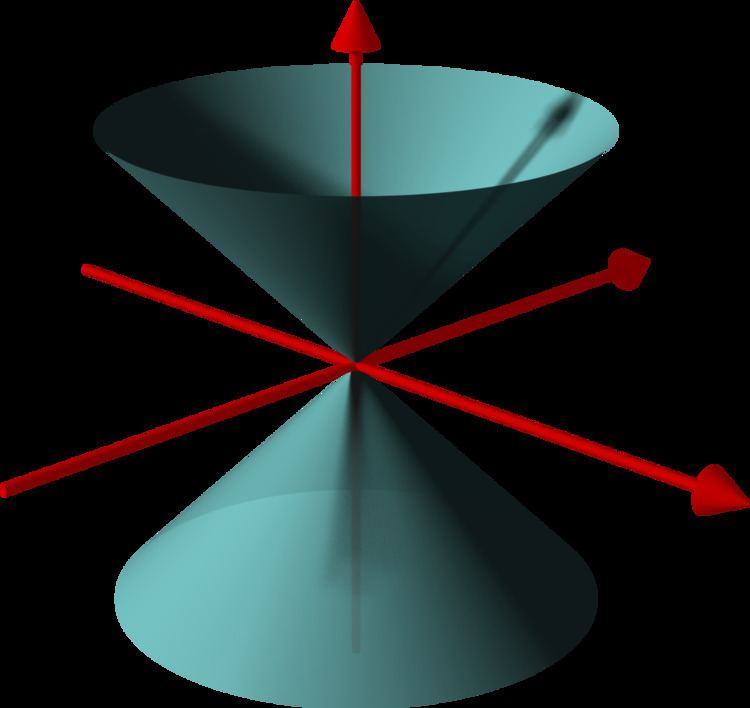 | ||
In geometry, a (general) conical surface is the unbounded surface formed by the union of all the straight lines that pass through a fixed point — the apex or vertex — and any point of some fixed space curve — the directrix — that does not contain the apex. Each of those lines is called a generatrix of the surface.
Every conic surface is ruled and developable. In general, a conical surface consists of two congruent unbounded halves joined by the apex. Each half is called a nappe, and is the union of all the rays that start at the apex and pass through a point of some fixed space curve. (In some cases, however, the two nappes may intersect, or even coincide with the full surface.) Sometimes the term "conical surface" is used to mean just one nappe.
If the directrix is a circle
More generally, when the directrix
A cylindrical surface can be viewed as a limiting case of a conical surface whose apex is moved off to infinity in a particular direction. Indeed, in projective geometry a cylindrical surface is just a special case of a conical surface.
Equations
A conical surface
where
A right circular conical surface of aperture
where
More generally, a right circular conical surface with apex at the origin, axis parallel to the vector
or
where
In three coordinates, x, y and z, a conical surface with an elliptical directrix, with apex at the origin, is given by this homogeneous equation of degree 2:
